In an era increasingly defined by climate change and environmental consciousness, the pivot towards carbon-neutral projects is more than just a trend; it’s a movement. As communities grapple with the adverse effects of climate change, carbon-neutral initiatives powered by renewable energy are paving the way for sustainable growth, social equity, and economic resilience. This blog explores how these projects are transforming communities, the role of major companies like Greenbacker Investment Company, and the future landscape of green energy funding and investment opportunities.
Understanding Carbon-Neutral Projects
Carbon neutrality refers to the balance between emitting carbon and absorbing carbon from the atmosphere in carbon sinks. To achieve this balance, projects focus on reducing carbon emissions and investing in renewable energy sources such as solar, wind, and hydroelectric power. Carbon-neutral projects are not just about elimination; they also involve practices like carbon offsetting, where companies compensate for emissions by financing environmental projects like reforestation or renewable energy installations.
The Community-Centric Approach
Communities around the world are increasingly adopting carbon-neutral strategies as part of their urban planning and development. By investing in renewable energy infrastructure, communities can:
-
Strengthen Local Economies: Renewable energy projects create jobs in installation, maintenance, and management. They stimulate local supply chains and can even draw in tourism related to sustainability.
-
Enhance Public Health: Transitioning to clean energy reduces air pollution, which has direct benefits for community health, potentially lowering public health costs and improving quality of life.
-
Promote Resilience: By harnessing local renewable resources, communities can reduce their dependency on fossil fuels, making them less vulnerable to price fluctuations and supply disruptions.
- Foster Social Equity: Community-driven projects often prioritize inclusive practices, ensuring that marginalized groups are engaged in and benefit from new energy solutions.
Market Trends Driving Carbon-Neutral Investments
The landscape for carbon-neutral investments is experiencing significant shifts fueled by several key trends:
1. Increased Regulatory Support
Governments around the globe are mandating reductions in greenhouse gas emissions. Policies such as the Green Deal in Europe and various state-level initiatives in the U.S. are setting ambitious targets for carbon neutrality by mid-century. These regulations are proving to be catalysts for investments in renewable energy and carbon-neutral projects.
2. Corporate Commitment to Sustainability
Major corporations are setting ambitious sustainability targets as part of their Corporate Social Responsibility (CSR) initiatives. Many companies are beginning to prioritize investments in renewable energy to offset their carbon footprints, designing sustainable supply chains, and engaging in corporate carbon-neutral programs.
3. Technological Advancements
The rapid advancement in renewable energy technologies, especially solar and wind, is reducing costs and increasing efficiency. From improved battery storage solutions to smart grid technologies, these innovations are making it easier for communities and governments to transition to sustainable energy.
4. Investment Capabilities of Firms like Greenbacker
Investment firms such as Greenbacker Investment Company are at the forefront of this transformation. Greenbacker specializes in acquiring and managing income-producing renewable power projects. Through their diversified portfolio, they provide investors with opportunities to support projects that directly contribute to carbon neutrality.
Major Companies Leading the Charge
Greenbacker Investment Company
Founded in 2011, Greenbacker has carved out a niche in the renewable energy sector by focusing on sustainable investments. The company emphasizes the deployment of solar, wind, and energy storage projects, offering investors a chance to participate in the fast-growing green energy landscape.
Key Contributions:
- Diversification: Greenbacker’s focus on a diversified portfolio helps mitigate risks while providing stable returns, appealing to both institutional and retail investors.
- Innovation: Greenbacker is instrumental in financing projects that prioritize cutting-edge technology and sustainable practices, making a tangible impact on local communities.
- Engagement in Carbon Offsetting: By investing in renewable energy projects that offset carbon emissions, Greenbacker embodies the principles of sustainable finance.
Other notable companies, such as Brookfield Renewable Partners, NextEra Energy, and First Solar, are similarly investing in comprehensive renewable energy solutions, furthering the mission of carbon neutrality.
The Future of Green Energy Funding
As we look ahead, it is crucial to understand the evolving landscape of green energy funding:
1. Growth of Green Bonds
The green bond market is booming, providing dedicated funding for sustainable projects. With increasing investor interest, governments and corporations are expected to issue more green bonds to finance carbon-neutral initiatives, thus expanding the pool of available capital for renewable projects.
2. Crowdfunding and Community Investment
Innovative crowdfunding platforms are democratizing access to investments in renewable energy projects. Local communities can come together to fund solar gardens or wind farms, gaining both financial returns and long-term environmental benefits.
3. Public-Private Partnerships
Public-private partnerships (PPPs) are proving effective in the rollout of carbon-neutral projects. By leveraging public funds and private expertise, communities can effectively scale their renewable energy initiatives.
4. ESG Investing Evolution
Environmental, Social, and Governance (ESG) investing continues to gain traction, with more investors seeking sustainable options. This trend is likely to boost funding for projects that aim for carbon neutrality and social impact, emphasizing the importance of sustainable finance.
5. More Individual Participation
As awareness about climate issues increases among the general public, individual investment in renewable energy projects is likely to rise. New financial products aimed at retail investors can create avenues for greater individual participation in the green energy revolution.
Conclusion
Carbon-neutral projects are not merely a passing trend; they represent a fundamental restructuring of how communities engage with energy and sustainability. Through collaborative efforts between governments, corporations, and individuals, the groundwork is being laid for a future characterized by resilience and environmental stewardship. Companies like Greenbacker are emblematic of this change, contributing to a momentum that is reshaping economies and fostering sustainable communities.
As we venture deeper into this green revolution, the opportunity for investment in renewable energy will continue to expand. With the realization that every investment contributes to the larger goal of sustainability, we are not only witnessing a transformation in energy production but also in community engagement and social well-being. The future of green energy funding is bright, and it’s a future that we can all help to create.


